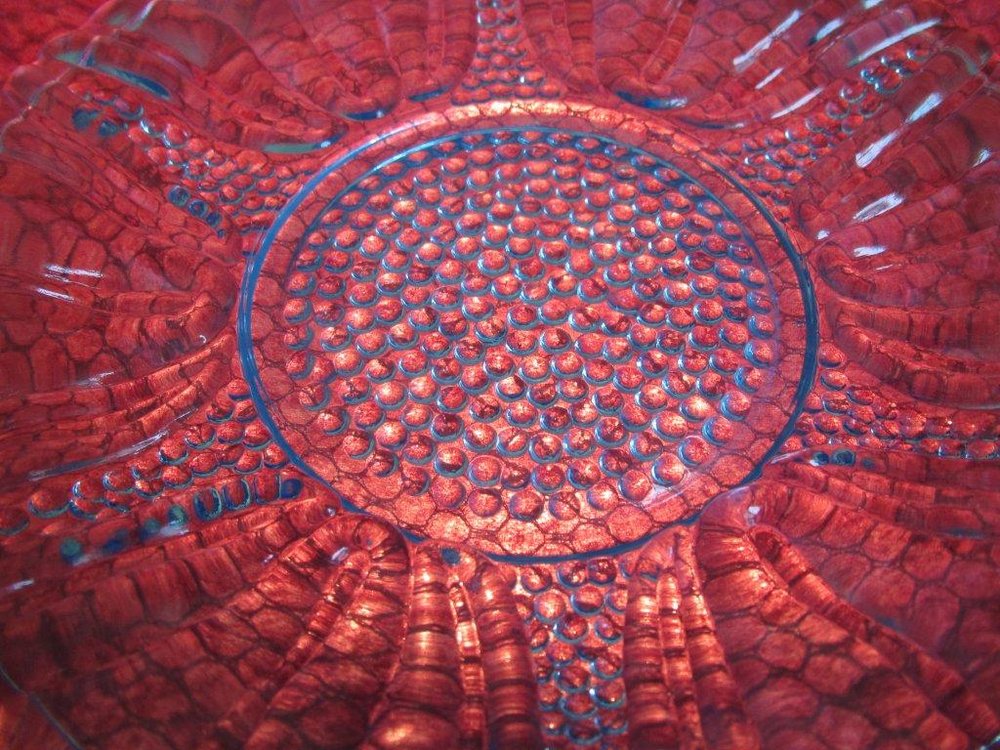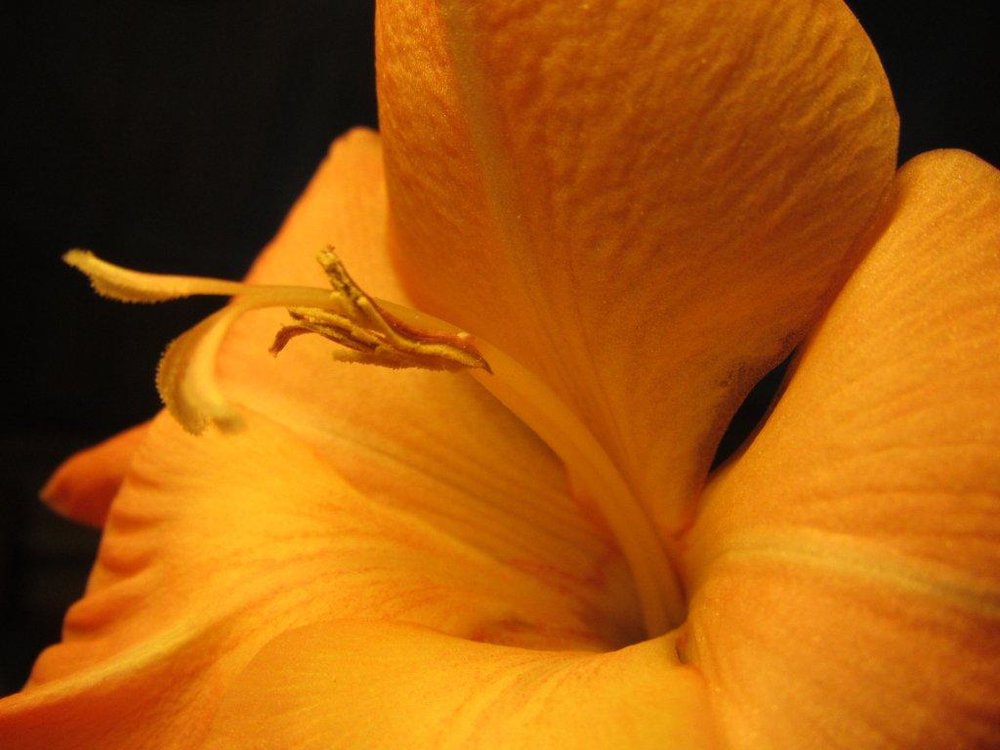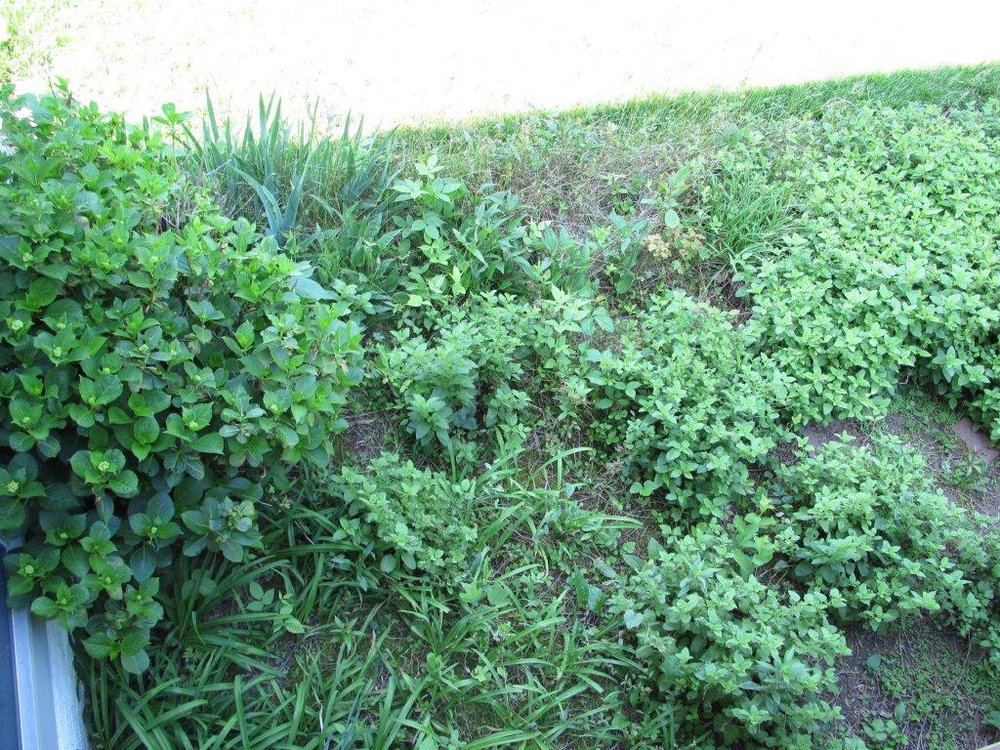Photography experiments
/Today’s blog posting shares some results from some recent photography experiments.
The first one is quite simple - some hydrangea leaves photographed on a white kitchen counter top with shadows from natural light from the window on the left. The way the shadows accentuate the shapes of the leaves and the intersection of the shadows of the middle and right leaf intrigue me the most about the image.
The next photograph is of a hydrangea flower - taken with natural light using an old television stand for the black background. It turned out that it provided a very flat black even if it did make for a rather awkward position to be photographing (i.e. essentially lying on the floor).

I did an earlier post on Blue Tulip Depression Glass. This is a photograph of a salad plate from the set photographed on a drying rack covered in deep red tissue with a small halogen light source shining from below.

The image to the right is a gladiola photographed lying on a black deskpad using light from a halogen lamp. The flower looked pinker with natural light but I liked the color shift caused by the difference in light.
This is probably my favorite picture of the group. The swirls and puckers are gladiola petals with a background of black felt taken with natural light. To me, it is easy to imagine that they are swirls of fabric - around dancers just off the frame.






























